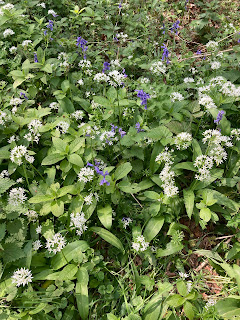Bluebells
The image above shows what, at first glance, appears to be a normal bluebell, but is actually a Spanish Bluebell, an invasive species in the UK. They can be distinguished from our native species by their wider bell, paler colour, broader leaves, flowers that are not restricted to one side of the stem, and heads that do not 'nod' as much as the native bluebells. Spanish bluebells are a threat to our native species as they outcompete them for resources such as light. They can also hybridise with the native species, which could dilute the gene pool and potentially lead to the evolution of a new species altogether.
The decline of native species is detrimental to other wildlife species which coexist with bluebells, for example pollinators may be specifically adapted to feed from the native bluebells and will decline with them, leading to ecosystem-wide consequences. The UK is home to 50% of the global bluebell population, therefore they are protected by law under the Wildlife and Countryside Act, 1981.






Comments
Post a Comment